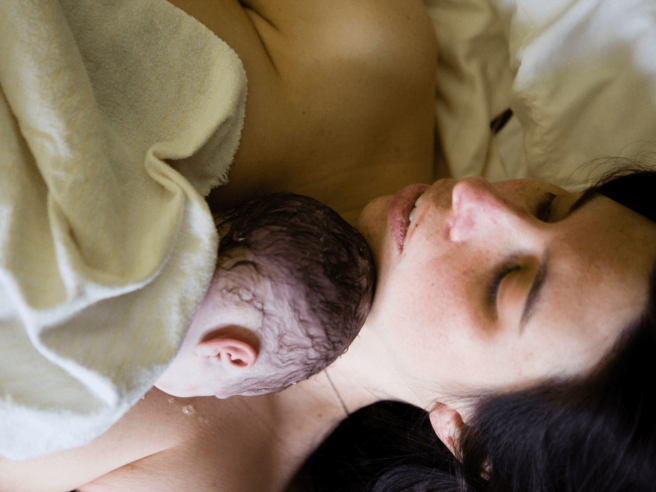Potty training is both a challenge and a big step forward for parents and toddlers. This guide offers expert advice to make it easier and successful. We’ll talk about spotting readiness signs, good training methods, and how to keep your child motivated. Learning to use the potty is a key step in your child’s growth. With the right steps, it can be a positive journey for your child. By knowing when they’re ready, using the best training methods, and cheering them on, you can make this change smooth and successful.
Understanding Potty Training Readiness
Potty training is a big step for a child, but it’s important to make sure they’re ready. Knowing the signs that show your toddler is ready is crucial for a smooth process.
Physical and Behavioral Signs
Check if your toddler can follow simple instructions and stay dry for a while. Also, see if they show interest in the potty or wearing underwear. These signs mean they’re ready to start potty training.
Timing It Right for Success
Timing is key in potty training. Don’t start too soon, as it can cause frustration. Wait for your child to show real interest and understand their needs. Paying attention to their cues helps make potty training positive and rewarding for both of you.
Potty Training Methods to Consider
Parents have many effective ways to potty train their kids. One popular method is the child-oriented approach. It makes potty training fun and interactive for your toddler.
Child-Oriented Approach
This approach lets your child be part of the potty training process. Let them choose their own potty training books, accessories, or special underwear. Giving them control makes them more excited and willing to learn.
Gradual Transition Technique
The gradual transition technique is another good way to potty train. It slowly introduces the potty, letting your child set the pace. Start with short potty sessions and increase the time as they get better. This method helps your child feel confident and comfortable.Knowing about different potty training methods helps you pick the best one for your child. This leads to a successful and easy potty training experience.
How to Potty Train Your Toddler: Step-by-Step Guide
Potty training your toddler is both rewarding and challenging. With the right approach and patience, it can be smoother for you and your child. We’ll guide you through the key steps to potty train your toddler successfully.Start by setting up the potty area with a child-sized potty in a handy spot. Make sure it’s easy for your toddler to reach. Encourage them to sit on the potty at set times, like after meals or naps. Praise their efforts, even the small ones, to keep them motivated.When your toddler gets used to the potty, start moving them to training pants or underwear. This helps them feel the need to go to the bathroom, which aids learning. Be patient and understanding, as accidents are part of the process.Being consistent with potty training schedules is crucial. Keep a regular routine, even on weekends and when you’re out. This helps your toddler know what to expect and boosts their confidence.Follow these steps and keep encouraging your toddler. With time and patience, you’ll master how to potty train your toddler. Remember, every child is unique, so adjust your approach as needed for a positive experience for both of you.
Encouraging Your Toddler with Rewards
Rewards can really help your toddler during potty training. They make the process fun and encourage good behavior. This leads to moving from diapers to the potty successfully.
Types of Potty Training Rewards That Work
There are many potty training rewards you can use. Options include stickers, small treats, praise, and special privileges. Find what your child likes best.Sticker charts are great for tracking progress and celebrating wins. Small treats like M&Ms or raisins give an instant reward feeling. Praising your child also boosts their confidence and encourages good behavior.When choosing rewards, be mindful not to give too many. The aim is to create a system that rewards your child but fades as they get better at using the potty. Finding the right mix of rewards makes potty training fun and helps with success.
Dealing with Potty Training Challenges
Potty training is a journey filled with ups and downs. As parents, we need to be ready for common challenges. Having a plan helps us tackle these issues with patience and a positive outlook.
Common Setbacks and Solutions
One big challenge is when toddlers resist using the potty. They might not be ready or interested, causing frustration. It’s important to slow down, check if they’re ready, and change our approach.Offering choices, making it fun, and encouraging them can help. This makes the process easier.Accidents and regression happen often during potty training. When this happens, stay calm and don’t scold. Clean up together and celebrate small wins.If your child starts having accidents again, focus on the positive behaviors. Adjust your training method as needed.The key to overcoming potty training challenges is being flexible, kind, and solution-focused. With empathy and consistent support, your toddler can get through this journey positively.
Potty Training Resources and Tools
Potty training can be tough, but there are many resources and tools to help you and your toddler. You can find everything from books to accessories that make the process easier and more fun.Reading about potty training is a great way to get ready. There are lots of books full of expert advice and practical tips. “Potty Training in 3 Days” by Brandi Brucks and “Oh Crap! Potty Training” by Jamie Glowacki are two popular ones. They offer great insights and strategies to help you.Online resources and communities can also be a big help. Websites like Potty Training Concepts and Parents.com have lots of articles and videos on potty training. You can also connect with other parents online to share tips and advice.There are many potty training accessories out there to make things easier for your toddler. Items like colorful potty chairs, step stools, and reward systems like sticker charts or treat jars are popular. These can make your child feel more excited and motivated.Using a mix of resources, expert advice, and tools can make potty training positive and successful for your toddler. Remember, every child is unique, so pick what works best for your family.
Conclusion
Potty training your toddler is a big step in their growth. It can be a positive journey for you and your child if done right. By knowing when they’re ready and using good potty training methods, you can help them feel confident and easy with the potty.Every child is different, so be patient and flexible. When potty training your toddler, make sure the environment is positive and encouraging. This helps your child feel motivated and empowered to reach this big goal.With the right strategies and some time and patience, potty training can go smoothly for your family. Embrace the challenges and celebrate the wins. Enjoy this special time in your toddler’s growth.
FAQ
When is the best time to start potty training my toddler?
Start potty training when your toddler shows they’re ready, usually between 18 and 24 months old. Watch for signs like staying dry for longer, showing interest in the potty, and following simple instructions.
What are the most effective potty training methods?
Top methods include the child-oriented approach, making it fun for your toddler. Also, the gradual transition technique works well, slowly introducing the potty and letting your child set the pace.
How can I encourage my toddler during potty training?
Use rewards and positive feedback to help your toddler. Things like stickers, small treats, or praise can motivate them to keep going.
What if my toddler experiences setbacks or accidents during potty training?
Setbacks or accidents are normal. Stay patient and supportive. Look into the cause, like fear, regression, or needing more practice time.
What resources and tools can help with potty training?
Many resources and tools can aid in potty training, like books, online guides, and accessories. Child-sized potties, step stools, and reward charts are very helpful



